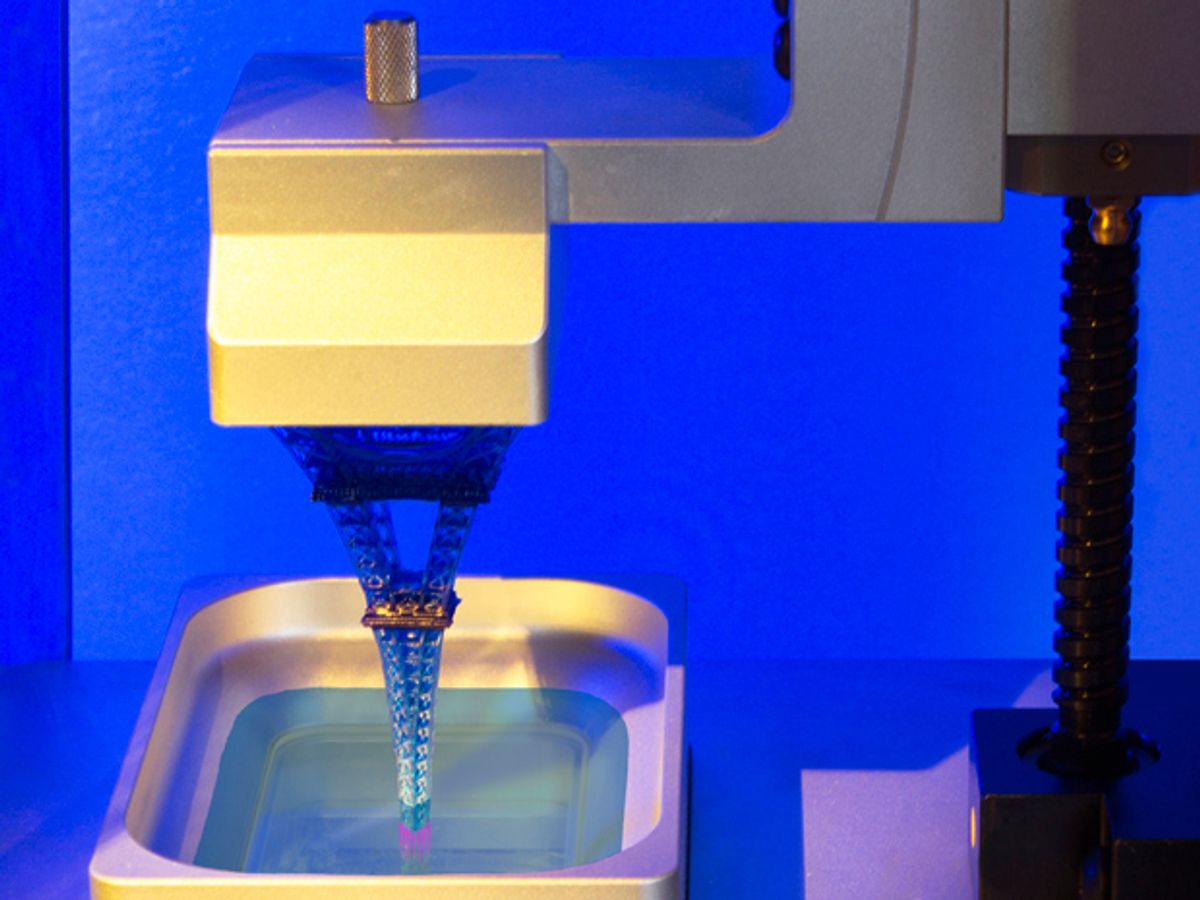Giant leaps have been made in recent years with 3-D printing. Though most 3-D printed items are made of plastic, more exotic ingredients have included sugar, mashed potatoes, and living cells. A 3-D printer commonly works by depositing a layer of material much like an ordinary printer and then printing out another layer once the material below has solidified. This procedure has a built-in problem: Even small objects take way too long to produce.
An object just several centimeters high can take hours to print. But now scientists at Carbon3D in Redwood City, Calif., and the University of North Carolina at Chapel Hill (UNC) say they can slash printing times by two orders of magnitude. Instead of printing an item step by step and layer by layer, the new technique prints objects in a continuous manner.
A 3-D printer often uses ultraviolet light to harden resins, but oxygen in the air often slows this hardening down. Instead of treating oxygen as an obstacle they had to overcome, the researchers used it to their advantage.
The new 3-D printer starts with a basin filled with a pool of liquid resin. Ultraviolet rays can emerge from beneath through a hole at the bottom of this basin. (Imagine a sink filled with resin where ultraviolet light can shine up from the drain.)
In the hole between the basin and ultraviolet rays, where a stopper might fill the hole at the bottom of a sink, is a layer of oxygen-rich liquid tens of micrometers thick. This layer serves as a transparent window for the ultraviolet rays. Solidification cannot occur in this "dead zone."
To print an object, a metal plate is lowered down onto the surface of the resin pool. Ultraviolet rays are then fired upward at the metal plate. The ultraviolet rays make the resin harden only in specific zones within this pool above the dead zone. The resulting solid object is attached to the metal plate. When enough of the object has solidified, the 3-D printer slowly pulls the metal plate upward. As the hardening item rises from the liquid resin, it creates suction forces that pull liquid resin into the basin to replace what was lost to the solidified object.
Using this new method, the scientists printed objects at speeds of up to more than 1 meter per hour, generating complex solid objects such as a 10-centimeter-tall version of the Eiffel Tower. By slowing down print speeds, they could also print features less than 100 µm wide, or thinner the average human hair.
One of the senior researchers on this work, UNC’s Joseph DeSimone, gave a TEDTalk on this project on 16 March. The scientists will detail their findings in the 20 March issue of the journal Science.
Charles Q. Choi is a science reporter who contributes regularly to IEEE Spectrum. He has written for Scientific American, The New York Times, Wired, and Science, among others.



